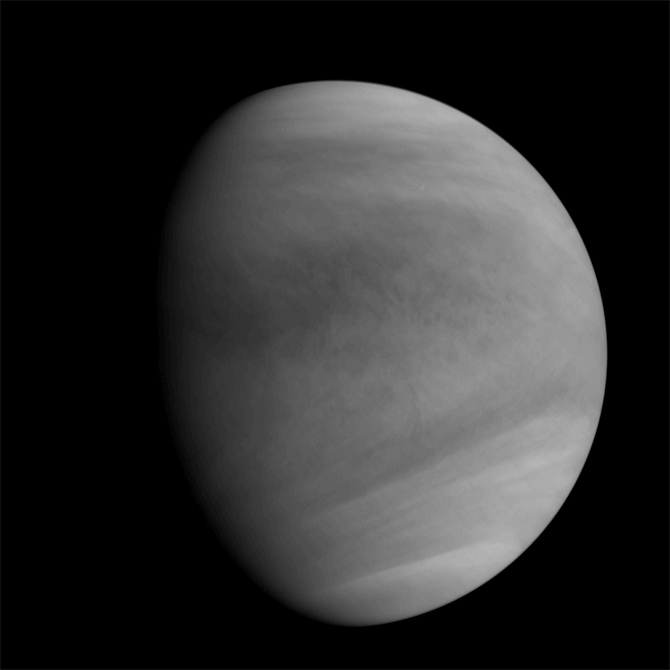Japanese probe "Akatsuki" sent the first photos of Venus

As previously reported , the Japanese were able to put their probe into the orbit of Venus at the second attempt, the main engine of which failed five years ago, due to which the first attempt failed. Now everything has passed, as well as possible. With the help of four shunting engines that were turned on for 20 minutes and 30 seconds, the Japanese scientists were able to slow down the probe, which allowed it to be put into the orbit of Venus. The engineers who designed the probe engine system did not even anticipate that the shunting engines would be included for such a long time. Nevertheless, they successfully passed the test, and now the designers of the device can be satisfied - everything went well, the probe could be put into orbit, which differs from the calculated one, but it is quite satisfying to scientists.
The current orbit of the probe allows the device to make one revolution around Venus every 13 days and 14 hours. The orbit of the apparatus is very elongated. "Akatsuki" moves closer to Venus at a distance of 400 kilometers at the nearest point and moves 440 thousand kilometers away from it at the most distant point.
The device is in excellent condition, all its systems are functioning and ready to work. Moreover, some tools are already working. Thanks to this probe, we managed to make and transmit to the Earth several rather high-quality photographs of Venus.
')

Photo taken December 7 from a distance of 72 thousand kilometers

Photo taken from a distance of 68 thousand kilometers
Estimated satellite operation time is 2 years. At the same time, it is possible to extend the operating time of the probe. It all depends on how much fuel is left in the vehicle’s tanks. So far, you can not give an accurate forecast.
The satellite will study the climatic and weather conditions of Venus. To do this, "Akatsuki" is equipped with 5 cameras, with which scientists can study the movement of clouds and the movement of air flow. In addition, the mapping of the surface of Venus is planned, with the simultaneous goal of detecting active volcanoes. Thick cloud cover does not allow to see the surface of the planet, but the infrared camera will help to solve this problem. The UV camera will track sulfur dioxide. After a series of observations and the receipt of relevant information by scientists, scientists may be able to build a three-dimensional model of the atmosphere and cloud cover.
Source: https://habr.com/ru/post/369195/
All Articles